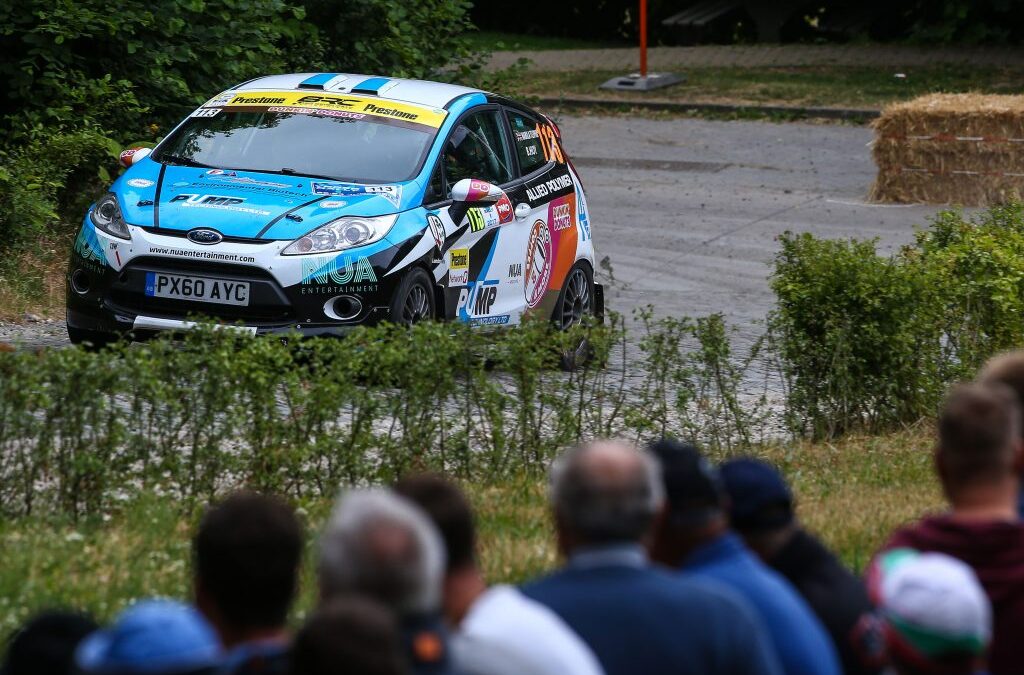Written by Sebastian Alston
Rallying is often overlooked in the world of motorsport. But, with competitors theoretically able to race in the same car they arrive in, it’s considered one of the most accessible motorsport categories. To delve deeper into this fascinating world, we caught up with former World Rally Championship (WRC) driver and British Rally Championship (BRC) ladies champion, Nabila Tejpar.
What are your first memories of racing?
“My first memories of racing are seeing my old grandfather’s photos and my dad taking me to RAC rallies back in the day, waking me up at 4am, putting me in the car and taking me over to Wales to watch them. I always loved the idea of it.”
Was rallying always something you wanted to do?
“I was the kid that joked about wanting to be a racing driver as a career. The two things that I wanted to be when I grew up were a spy or a racing driver. Neither of them seemed feasible, I was just joking around. But as I got older I figured out there was an opportunity.”
“At the age of 12 I started to learn how to drive in the backyard. We had fields so my dad took me out to teach me how to do handbrake turns. At 16 I tried a rally car for the first time and instantly knew that’s what I wanted to do. I asked my parents, but they said no.
“My mum made me go to university first so I tried to do that as quickly as possible. As soon as I graduated, I got my licence from Motorsport UK and started competing in 2015. In 2016 I started the British Championship.”
“I went into rallying because I’m a third generation rally driver in my family. There was never even a consideration of going into single seater racing. I would get bored going around a track, it wasn’t for me. But the idea of being out in the middle of a forest or on tarmac roads appealed to me, so it was never any question that I was not going to end up in a rally car.”
Who were your role models?
“I didn’t have any one singular person but as I got older and I started to watch more WRC, and [Sebastien] Ogier and [Ott] Tanak were coming into the mix. That’s probably when I started to say that I looked up to someone.
“There was also Lewis Hamilton who was starting back in the day as well. When I was about 16, Molly Taylor started so I got to meet her and I’d say that she was one of those people that made me realise anyone can do it.”
What is your experience as a woman in motorsport?
“I hate this question because I never experienced it as a female. I was very lucky. When I first went into BRC, not a single one of the guys could have cared less. I was the only female driving at that point in time. There were female co-drivers but I was the only one doing it and I have to say everyone was just super helpful and super nice; they were willing to give me advice.
“Now that could be very different in single seater racing because it’s a very cutthroat industry. But when I was going to mid-Wales I spoke with all the different drivers and they were all just happy that I showed up and was doing it. Not a single one of them made me feel like I shouldn’t be there.
“What I experienced as my career went on was more racial adversity. I come from an ethnic background and I was the only person of colour in a lot of service parks. Working with brands as time went on, I kind of realised unconscious bias existed. I hate bringing it up but it’s important to talk about just so people know it’s there.”
Why is rallying more inclusive?
“I just think everyone cares. When you go to a service park, everyone is friendly with each other. When you go speak to Elfyn [Evans] or Thierry [Neuville], all of those people are friends, not a single one of them doesn’t like the other. They’re all talking before a stage because we literally end up in the same spots putting our helmets on so you’re constantly around people, you’re having conversations.
“Focusing entirely on your own race is what’s important, so there’s no reason for you to have any animosity when you’re competing. I’ve never come across people that aren’t interested in having a chat and I made a lot of friends randomly just talking. No one’s hiding anything.”
How can others try rallying?
“From the experience I have of talking to younger girls and them asking me how I got into it, a lot of it stems from family being previously involved in motorsport. I was very lucky I had a dad and a grandad involved.
“For people that don’t have that sort of access and are interested, Google is your best friend. Start looking it up, watch some YouTube videos. Then use local rally clubs or racing clubs generally because there’ll always be one in your area and most of the time those clubs are wanting more people involved.
“You can then get your racing licence; the Motorsport UK pack is probably the best place to start because anywhere that you’re gonna go, you need that. Having that under your belt and having links then with Motorsport UK is a great start.”

